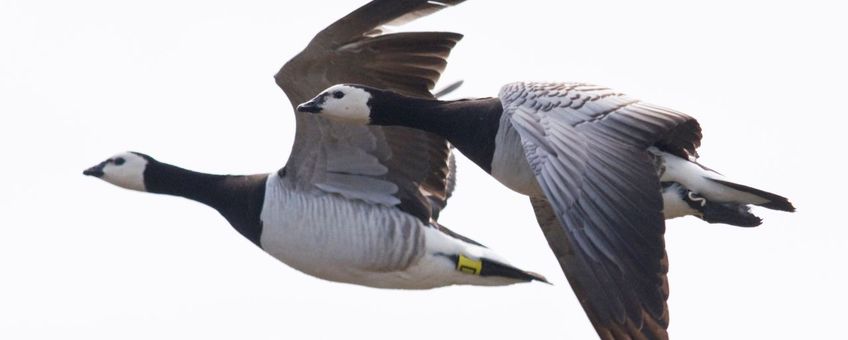
Can barnacle geese predict the climate?
Netherlands Institute of Ecology (NIOO-KNAW) It's the time of year when barnacle geese and many other migratory birds prepare to depart for their breeding grounds above the Arctic Circle. From their wintering grounds in the Netherlands, the geese go all the way up to the Barents Sea in northern Russia, where they should arrive just as the snow has melted. But in the polar regions, the climate is warming much more rapidly than here, a phenomenon known as 'Arctic amplification'.
It's the time of year when barnacle geese and many other migratory birds prepare to depart for their breeding grounds above the Arctic Circle. From their wintering grounds in the Netherlands, the geese go all the way up to the Barents Sea in northern Russia, where they should arrive just as the snow has melted. But in the polar regions, the climate is warming much more rapidly than here, a phenomenon known as 'Arctic amplification'.
It's hard enough for humans to get to grips with the accelerated warming, let alone for barnacle geese, as an earlier NIOO-led study showed. After all, how can they tell from their wintering grounds if the snow has begun to melt thousands of kilometres away? So is it possible for the barnacle geese to advance their spring migration nonetheless, and predict climate change?
First study: fewer goslings
Ecologist Thomas Lameris and his fellow researchers from NIOO, but also the Swiss Ornithological Institute among other institutions, have tried to find the answer. "This is the first study that tests if migratory birds are in any way able to adjust their timing to the accelerated warming in the polar regions. We used a model to show that the availability of enough grass to build up reserves for their journey is not a problem for the barnacle geese. It's the unpredictability of the climatic changes in their breeding grounds that spells trouble for them."
If the geese continue to mistime their arrival, this will reduce their reproductive success. Lameris: "They miss their optimal breeding window and the peak in local food abundance, so fewer goslings will survive as a result." Some compensation for this comes from the fact that as well as starting earlier, the breeding season is longer, giving the goslings more time to grow. But that's not enough.
To establish the barnacle geese's potential for anticipating climate change, the researchers built a model that tracks individual geese as they fly to their breeding grounds in northern Russia and make stopovers along the route. "In the model, the geese have to make a choice each day: stay in their present location and continue to feed, or fly to the next stopover." The researchers tested the model for various gradations of climatic warming.
Smarter migration strategy?
The barnacle goose is an ideal 'model species' for studying the effects of climate change, because researchers have been able to study the geese for decades. But it's not just about a single species. Lameris: "Our results are probably valid for many more species of Arctic-breeding migratory birds, and certainly for other geese such as the white-fronted and the brent goose."
On the whole, geese are clever birds. Goslings learn the migration route from their parents, including the best places to stop over and build up reserves. "So if they do change the timing of their arrival, it would be easy to pass that on to the next generation", Lameris argues hopefully. "The main question is whether geese and other migratory birds can adapt as fast as the climate changes, to keep up with the changes."
The results are published online by the scientific journal Global Change Biology.
Text: NIOO-KNAW
Photos: Jasper Koster; Thomas Lameris

